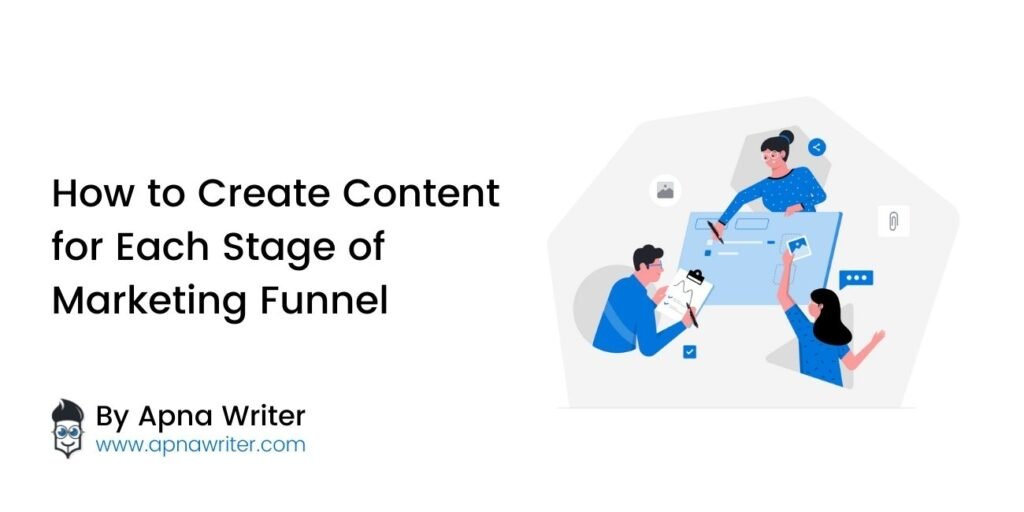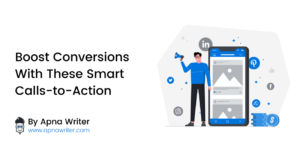There’s a rare chance that a prospect becomes a customer the first time it comes in contact with a brand. According to a study, 92% of first-time visitors don’t purchase the first time they land on a retailer’s website.
But that doesn’t mean that 92% won’t ever be your customers. You can still convert them by setting up a marketing and sales funnel.
A sale is completed when a prospect progresses through the different funnel stages, like gaining information regarding a particular product, analyzing its impact or value in their lives, and then making the buying decision.
The entire path is termed the buyer’s journey. In the digital age, where information is available to consumers with a few clicks, you need to understand your buyer’s journey deeply.
Why?
Because of two reasons:
- To create personalized and relevant content for every stage of their journey.
- To ensure your prospects get the right message at the right time in their buyer journey by setting up a foolproof marketing funnel.
So, how to create content for your target audience buyer’s journey?
What are those stages?
We’ll cover all of that in this post, but first, let’s understand the basics:
Table of Contents
ToggleWhat is a Marketing Funnel?
A marketing funnel or a sales funnel is a step-by-step path that a customer goes through to transact with your brand finally.
It is the collaboration of all marketing efforts from the day your target audience first learned about your brand to the day they purchase your service or product.
Marketing funnels are categorized into different stages, which represent steps involved in making a buying decision.
Let’s further break down these stages.
Marketing Funnel Stages
There are primarily three stages in a buyer’s journey:
- Awareness
- Consideration
- Decision
Every stage involves different marketing approaches and different content formats to make the prospect take the desired step.
Understanding the customer journey is crucial for effective marketing. At TapWell, we’ve seen firsthand how tailoring content to each stage of the funnel drives results. From sparking interest with informative blog posts about corporate gifting trends to addressing specific needs with detailed product comparisons, and finally, sealing the deal with personalized gift recommendations, a well-crafted content strategy has been instrumental in our growth. Shared by Rases Changoiwala, Co-founder and Employee Engagement Expert at TapWell, a corporate gifting company in India.
Awareness Stage Or Top Of The Funnel:
It involves making the target audience aware of the problems that they are going through in their lives.
Audiences at this stage are also called cold audiences. They are not aware of your brand or the product/service you offer, and they are not aware of the impact of their problems.
💡 Remember: It requires at least eight interactions for a consumer to actually remember a brand name. So, you need to make multiple business impacts using an omnichannel approach to lead your prospect from the awareness stage to turning them into your customer.
Consideration Stage Or Middle Of The Funnel:
Once you filter out prospects through consistent marketing efforts, you convert cold audiences to warm audiences. They are now aware of the problems/pain they are going through, but they are not aware of the solutions.
They don’t know who will provide the best-tailored solutions to their problems.
At this point, your brand needs to show them different solutions to their problems that’ll help bring positive changes in their lives and take them a step forward towards the decision-making stage.
Decision Stage Or Bottom Of The Funnel:
Now that the base is set, your target audience knows about the problems and the possible solutions, it’s time for you to hit the home run. At this stage, you introduce them to your product/service and tell them how it is the best choice for them.
Since you have made multiple contacts with them through your content, and have educated them throughout your funnel, when you present them with your product/service, buying from you is the natural next step for them.
All because the relationship you have created is timely, which removes all the uncertainties of your audience choosing your competitors over you.
You have nurtured your cold prospect into a hot buying lead.
This stage requires you to be direct and specific with your content so that your hot lead takes your desired action.
Now that you are clear about the different stages of the funnel, let’s understand how you should talk with your future customers at each stage.
Content For Each Stage Of The Funnel
Depending upon your niche and the pricing of your products/services, the content format and content requirements can vary for each stage of the funnel.
It will take more engagement, nurturing, persuasion, and relationship development to convert a high-end B2B client or sell $10,000 worth of product/service than selling a $50 pair of sneakers.
The nurturing, engagement, and relationship development are only possible if you use the right content for the right audience at the right time during their buying journey. If you have different audiences in your marketing pipeline, you’ll need to approach every set with varying types of content and topics.
In a buyer’s journey, let’s find content formats suitable for all three sales funnel stages.
Content For The Awareness Stage
Check out the following awareness stage content formats you can choose based on your business goals and your niche:
- Blog post
- Whitepaper
- Social media post
- Checklist
- Awareness ad campaigns
- How-to video
- Kit or tool
- Educational webinar
- Ebook or tip sheet
All these content formats will help you introduce your brand to the audience more professionally.
You’ll establish credibility and authenticity in the eyes of your target audience to kick-start a new bond.
You can even target the pain points using evergreen content formats like blog articles, ebooks, and social media posts to highlight your target audience’s problems and pains.
Create a six-month content calendar and start with content creation because you need to create your brand recall in your cold audience.
💡 Remember: Before you jump onto the selection and execution part of your content marketing campaign, be crystal clear about your buyer persona. You must be fully aware of what your audience wants, feels, and desires.
Content For The Consideration Stage
Once your audience has passed through the awareness stage, you’ll convert your prospects into leads.
These leads, now in the consideration stage, can be your future customers, as they have engaged with your brand at least once. So now you can choose from the following content formats to progress them to the final stage of the funnel:
- Case study
- Product comparison guide
- Free samples
These are the top ideal formats to target your warm audience.
Content For The Decision Stage
In this final stage of the funnel, the hot lead just needs that extra push to buy from you.
The best way to do that is by making the audience experience your product or service somehow. If you have ever taken an automobile test ride before purchasing one for yourself, you’ll know what we mean here.
The content formats that can help you convert a sale at this point are:
- Consultation Offers
- Live demos
- Free trials
- Scarcity driven coupons
Scarcity and FOMO are the most important emotions you must trigger while closing a sale.
Are You Ready To Create Content As Per Buyer’s Journey?
Humans buy something to either help solve a problem in their lives or enhance their interests, and your content should help them move closer to what they want at the core of their psychology.
But creating content that does exactly that is not easy. Your content needs to break through the noise and create an impact on your buyer persona.
And to do that, either you need to have those professional content crafting skills or hire an in-house team of writers, editors, strategists.
But if you are low on budget and don’t want to burden your brand under the pressures of hiring or learning to write the content yourself, we have a more impactful and cost-effective way for you:
Outsourcing
Yes, you can outsource your content requirements to a professional content service provider like Apna Writer to achieve your business goals while you do what you are best at, that is, managing your business.
We are one of the leading content writing agencies in India. In the past few years, we have helped over 300 brands with everything from strategizing their content marketing to delivering content for their brand.
We would be happy to do the same for your brand. So, associate with one of the best and achieve the best for your business.





